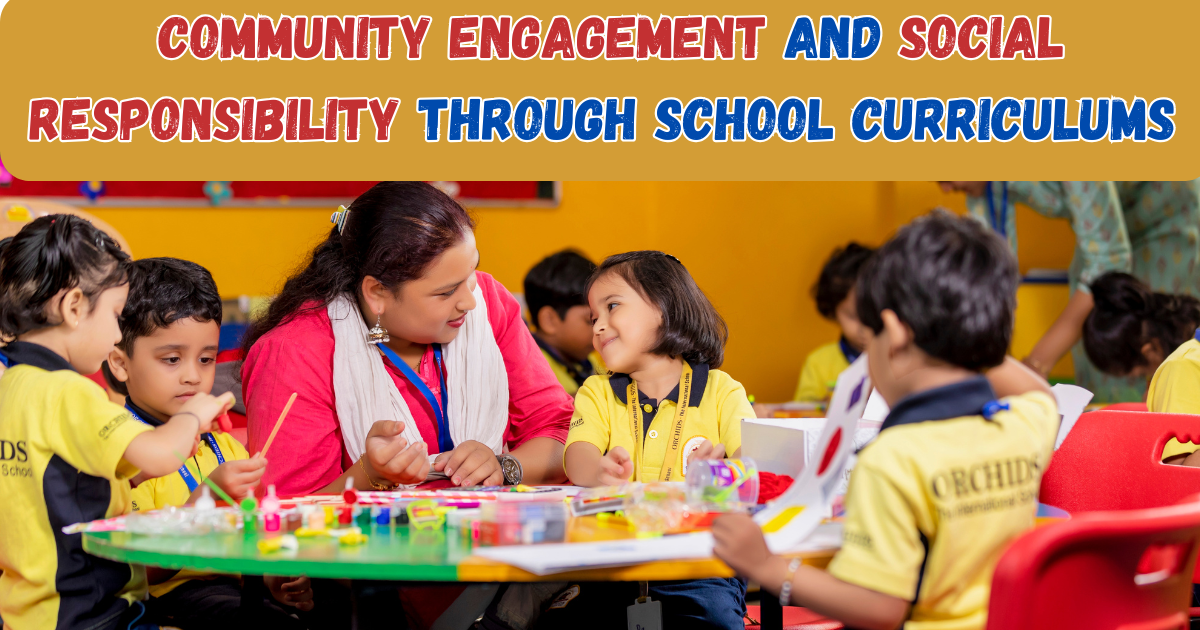Promoting Community Engagement and Social Responsibility Through School Curriculums: In today’s changing world, education goes beyond teaching academic subjects. School plays a role in shaping individuals who care about society, have the values and skills, and are dedicated to making a positive impact in their communities and globally.
Promoting Community Engagement and Social Responsibility
Community engagement is one of the key pillars of corporate social responsibility, alongside the concern with the workplace, the marketplace and the environment. Community involvement can take many forms.

What is community engagement?
Community engagement is based on the democratic idea that everyone who is affected by an issue that impacts their community should have a say in decision-making around it. It, moreover, holds the promise that public participation can influence decisions that affect the provision of service, future visions and sustainability of our communities.
Community engagement seeks to engage the community to achieve sustainable outcomes and equitable decision-making processes and deepen relationships and trust between government organisations and communities.
Here are some in-depth insights into community engagement in education.”
1. Creating a supportive network
Community engagement weaves a supportive community around students, teachers, and schools. It brings together parents, local businesses, civic organisations, and community leaders to create a conducive environment for learning.
2. Real-World Learning Experiences
Community involvement provides students with real-world learning experiences. Partnerships with local businesses, museums, and community groups offer hands learning opportunities that complement classroom education.
3. Resource sharing and support
The community serves as a rich resource for school. Through donations, volunteer programmes, or mentorship opportunities, community engagement supplements education resources and provides additional support.
4. Cultural and Diversity Understanding
Engaging with diverse communities promotes cultural understanding. It exposes students to various backgrounds, traditions and perspectives, fostering a more inclusive and empathetic educational experience.
5. Promoting Social Responsibility
Community engagement instills a sense of social responsibility in students. Through volunteer work, community service projects, and civic engagement, students learn the value of giving back and making a difference.
6. Enhancing Career Pathways
This exposure helps students explore career pathways and gain practical insights into various fields. Partnership with local businesses and professionals open to mentorship and internship opportunities.
7. Parent and family Involvement
Engaging families and parents in the education process is big. Schools and communities working together ensure that parents are actively involved in their child’s education.
8. Community as Educational Partners
Communities aren’t just recipients of educational services; they’re active partners in the education process.
9. Shared Goal and Collaboration
When schools and communities both share education goals and collaborate, the impact is significant. This collaboration allows for alignment between community needs and educational priorities.
10. Fostering lifelong Learning
Engagement with the community goes beyond the school years. It fosters a culture of lifelong learning; it is encouraging individuals to continue seeking knowledge and contributing to their community.
Understanding the Importance of Social Responsibility in Education
Education and corporate s
- It Empowers Future Generations: The future is depend on the right education, and it builds skills, confidence and future opportunities.
- Bridge the Achievement Gap: CSR initiatives guide underprivileged children toward growth by giving access to technology and the internet for everyday learning.
- Improve Teaching Quality: CSR helps train teachers and upgrade schools. Better tools and training mean better teaching for students.
- It Helps in Reducing Inequality: one of the best corporate social responsibility practices is that it helps in reducing the inequality between upper and lower classes in the society.
- Promoting Digital Inequality: In this technology-driven world, understanding the need and working on digital skills is all kids need.
Vital role of Corporate Social Responsibility in Education
- Helps in Bridging the Gap: Social responsibility funds for education are the best way to bridge the gap between upper and rural communities.
- Connect with Innovative Learning: It also needs education on current scenarios and trends to win the world.
- Policy Advocacy: Many organisations take part in education policies to uplift the upcoming era.
- Get Real-World Exposure: This is one of the best ways through which students can understanding the working environment in which they are going to work.
Conclusion
In this article we discussed promoting community engagement and social responsibility through school curriculums. Community engagement weaves a supportive community around students, teachers, and schools. Social responsibility funds for education are the best way to bridge the gap between upper and rural communities.
